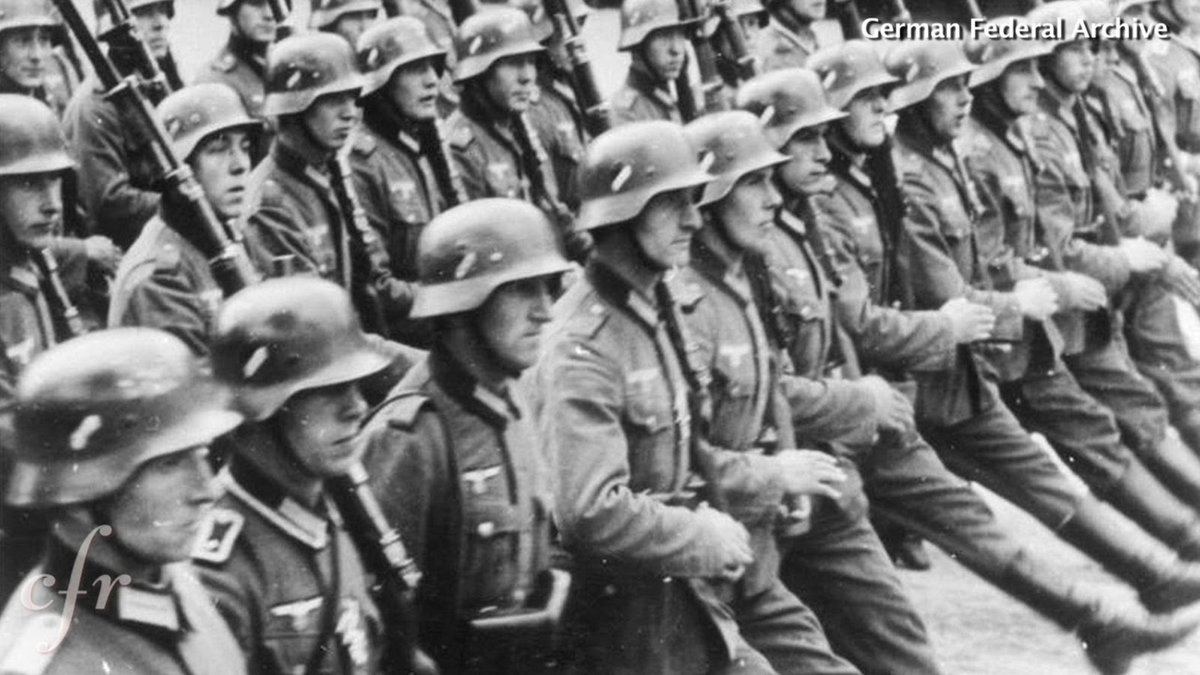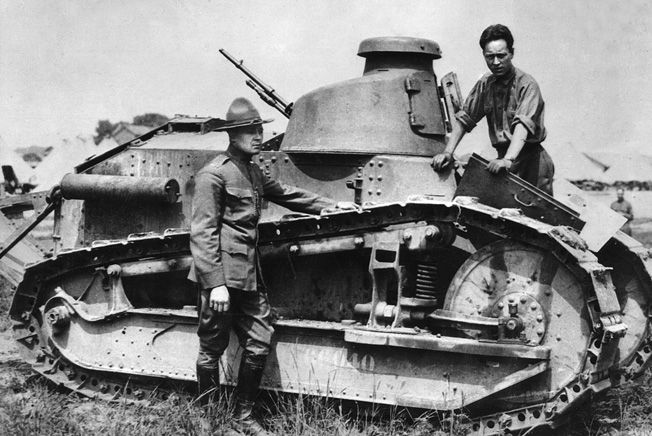
Military history is often (mistakenly) considered to be just about wars. And when we talk of @USArmy history, many think we mean just in the context of war. When the Army is engaged in battles.
But the Army exists between wars.
But the Army exists between wars.

And during peacetime, between wars, the Army trains and maintains, advances and evolves, all to ensure a sufficient state of readiness should an emergency need arise.
However, this was not always the case.
(1919 Maneuvers, Ike is second from left)
However, this was not always the case.
(1919 Maneuvers, Ike is second from left)

Army leadership in WWII had fought an uphill battle for nearly 20 years leading up to the war to make this happen, facing resistance not just from the Federal Government but from the American public. 

A “peace-minded” nation would not generally think about military affairs on a regular basis. But after WWI, there was a deliberate avoidance of anything “military” that exacerbated the general ignorance and apathy toward national defense requirements in peacetime. 

During the first 10 years following WWI, things were pretty good, and this fed the delusion for most of the population and government that another war wouldn’t happen and thus there was no need to build up national defenses. 

Certainly, there was no need for large defense spending. Or acquisitions. Or upgrading equipment. Or developing new Doctrine. Any military spending during the Interwar Years was done so almost begrudgingly, and with less and less approved every year.
The Depression hit in the 1930s and the government faced enormous deficits each year that further discouraged spending, especially spending on things the majority wished to consider “needless”. The bare minimum was provided for maintaining our deteriorating armed forces.
We won’t go into major detail about what the @USNavy and @USMC were doing during this period, but we will discuss some of the development of the @usairforce among related topics.
With that said, the White House did approve a naval building program during the Depression, which was justified because it would create work. 

During the Interwar Years, we were aware that Germany and Japan were both building up forces. And those topics will be explored a bit through the “Building an American Army” Podcast. 



But for now, it is important to note that 1933 was probably the lowest point for the US Army during this period, and when we started to focus on reviving the Army in 1939 there was a lot of catching up to do. 





Numbers were below the set capacity. Equipment was obsolete. The military itself was scattered across the country and had never gathered for maneuvers (exercises) at the corps level – there was no complete organization for the Army at the time.
The Army’s air elements were even fewer in number, but appropriations began to increase around 1938. Although, as we will note later, what the air elements wanted to buy and develop and what Congress would approve were not necessarily the same.
The @USNationalGuard was expected to support and supplement the Regular @USArmy and even the National Guard numbers were extremely low during peacetime. They were also insufficiently trained and equipped.
The Army Supply Services were low in number of personnel and in reserve stockpiles of equipment and supplies.
But somehow the Supply Services, especially ordnance (@USAODCorps @ChiefofOrdnance @OrdnanceCSM) managed to remain quite efficient in operation and alert to developments, and this proved vital later.
The United States did not have an established Military Industrial Complex and the industry that was available in 1939 was not set up for wartime production.
(This photo is from 1942.)
(This photo is from 1942.)

This means industry was not set up to produce military equipment or to produce military equipment in sufficient quantities. Most were completely unfamiliar with wartime needs and requirements. 







“Recalling today how magnificent was to be the effort of the nation and all its parts once war actually came, one is struck the more by the inertness of 1939…” 

“… when war was almost at hand but when a large part of the American public was still suspicious of ‘militarists’ and still sure that war could not come to America.” 

Interestingly, during the Interwar Years from 1919 to 1938, if the @USArmy was to consider the next ground war, the most likely opponent was assumed to be Mexico. For that war, it would be necessary to have Horse Cavalry, armored cars, maybe even wagons. 

Most Americans did not want to consider another war in Europe. We are surrounded by some of the largest natural defensive structures on the planet – the Atlantic Ocean to the east and the Pacific Ocean to the west – at the most, maybe we would consider strategic bombings. 







Strategic bombing was appealing in the sense that it would, in theory, allow the US to send fewer troops, if any, but still project American military strength sufficient to contribute to a fight. It seems like a decent idea, but things would not work out that way.
Luckily, the Army had some heroes who continued to develop & advance Doctrine throughout the Interwar Years. They could not effectively test & fine-tune that Doctrine without large exercises & real-world application, but without their effort we would have been far worse off. 







Modest national awareness of the situation in Europe would not come to realize or appreciate the increasing likelihood of US involvement until the 1940s after the German Blitzkrieg. 







And even then, American acceptance that the country was not in fact safe from impacts of the war would not come until December of 1941. 







If you're just tuning in or you've missed any of the previous threads, you can find them all saved on this account under ⚡️Moments or with this direct link
twitter.com/i/events/13642…
twitter.com/i/events/13642…
• • •
Missing some Tweet in this thread? You can try to
force a refresh















